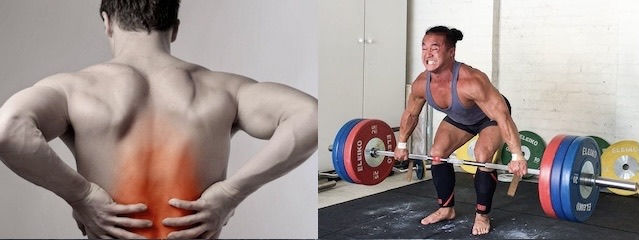The Role of Rehab in Long-term Pain Relief.
- Dan Gifeisman DC

- Jul 30
- 3 min read
By Dr. Daniel Gifeisman, DC | Empower Sport and Spine, Katonah, NY

Pain is frustrating. Whether it’s a nagging shoulder, a stiff lower back, or a recurring knee issue, the natural impulse is to chase relief as fast as possible. But the truth is, real, lasting change doesn’t come from just “getting out of pain.” It comes from building capacity so your body is better prepared for what life or sport throws at it.
That’s the purpose of rehab. At its core, good rehab is simply good training while injured. It’s about meeting you where you’re at, including your pain, and helping you move toward the function you want to regain.
Why Pain Alone Is a Poor Guide
One of the most common misconceptions is that pain tells us how “bad” an injury is or how much progress we’re making. It doesn’t.
Pain is real, but it’s influenced by:
Stress, sleep, and recovery
Past experiences and beliefs
Sensitivity of the nervous system
Fear or avoidance of movement
Pain without loss of function may not need fixing. And a reduction in pain without improvement in function isn’t success. You can feel a little better but still be unable to run, lift, or sit without fear. That’s not good rehab. That’s symptom chasing.
How Rehab Actually Helps for Long-Term Pain Relief
Instead of relying on outdated ideas like tiny or imperceptible “muscle imbalances” or “faulty movement patterns,” evidence-based rehab focuses on capacity and does your body have the required mobility for your desired activity . Can your body handle the demands you’re placing on it and get to where it needs to be to execute properly?
Injuries usually happen for one of two reasons:
1. You were underprepared for the task
This could mean:
Not enough strength or power in relevant tissues
Poor endurance or stamina for the activity
Inadequate recovery from previous stress
2. You did too much, too soon, after too little for too long
The classic example:
“I haven’t sprinted in 10 years, but last weekend I played softball and tore my hamstring running to first base.”
The body adapts to what it regularly does. If it hasn’t done something in a long time, then suddenly demands it, there’s a mismatch, and that’s where injuries often occur. Good rehab and smart training prevent this mismatch.
What Makes Good Rehab?
It’s not about isolating every small muscle or stretching everything that feels tight. Instead, it’s about training with purpose, while accounting for your current limitations to produce long-term pain relief.
Here’s what good rehab includes:
✅ Progressive Strength and Movement Training
Pain-free or pain-tolerable loading in meaningful positions: squats, carries, hinges, pushing, pulling. These aren’t off-limits just because you’re in pain. They’re essential, even if modified.
✅ Targeted Accessory Work
If you’re lacking hip internal rotation, you don’t skip deadlifts. You do them within your tolerance and add focused drills that build the missing piece, not just stretch it. Accessory work supports the big patterns.
✅ Lifestyle Integration
You can’t out-rehab a 6-hour sleep schedule. Lifestyle factors like sleep, nutrition, and stress are non-negotiable. If you’re constantly under-recovered, your body’s capacity to adapt shrinks. That’s when injury risk rises and progress stalls.
✅ A Focus on Function, Not Just Pain
The goal isn’t just to “hurt less.” It’s to:
Regain lost movement or ability
Build confidence in your body
Return to training or daily life stronger than before
Pain relief is a byproduct. Function is the goal.
When Is Rehab Appropriate?
Rehab isn’t just for post-op cases or serious injuries. It benefits:
Active individuals with lingering or recurring pain
Athletes training through minor injuries
Desk workers with tight hips or stiff necks
Anyone who feels limited but wants to keep moving
Rehab fills the gap between being in pain and being at full performance. It’s for when you’re not injured enough to stop, but not ready to go full throttle.
Final Thoughts: Train With Purpose
At Empower Sport and Spine, our approach to rehab blends evidence-based chiropractic care with performance-driven movement training. We don’t chase pain. We build capacity. We don’t avoid lifting. We teach you how to do it better. And we don’t just stretch what feels tight. We train what needs strengthening.
If you’re looking for long-term relief and sustainable performance, it’s time to stop managing symptoms and start rebuilding function.
👉 Have questions? Check out our FAQ


Comments